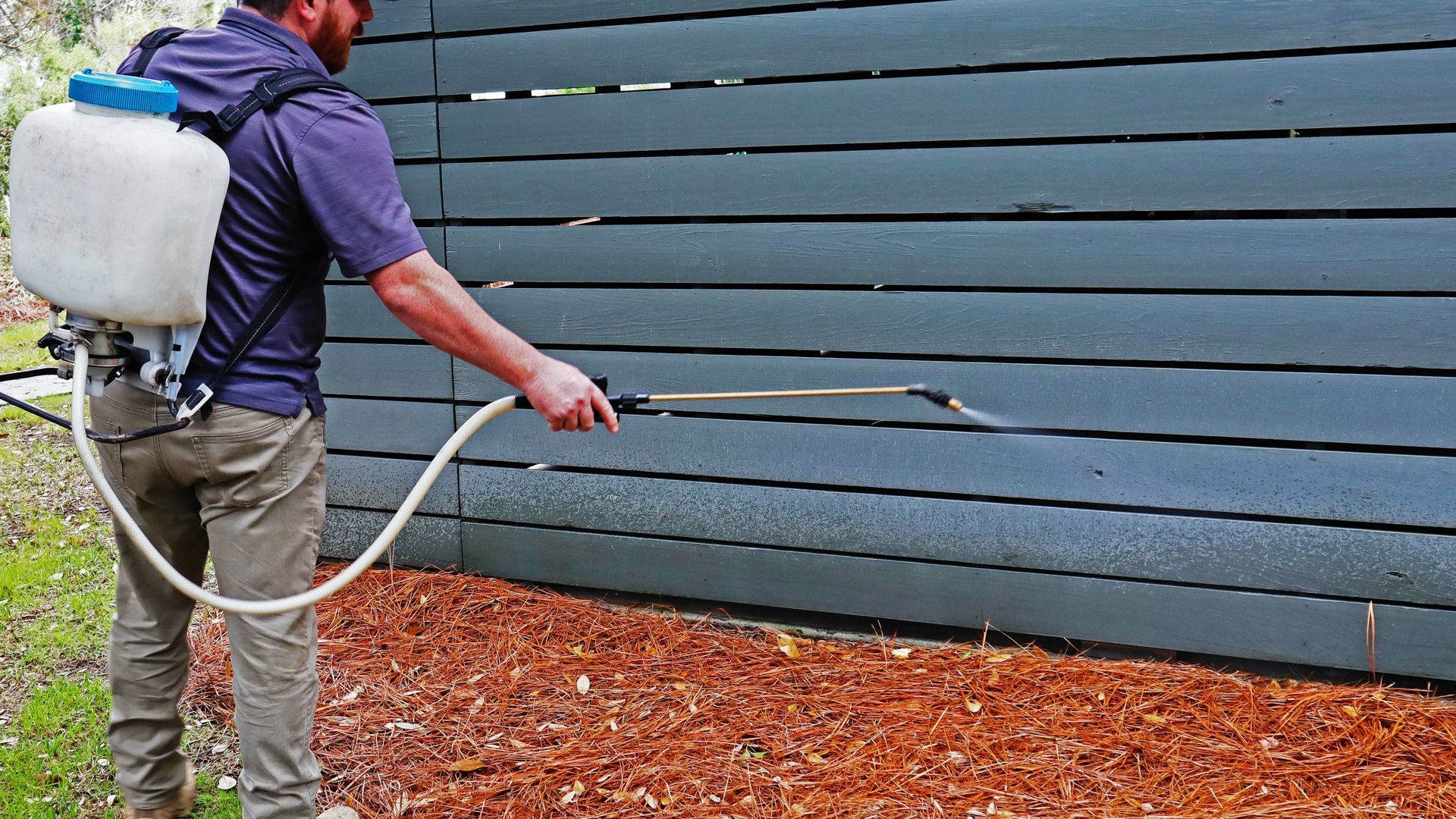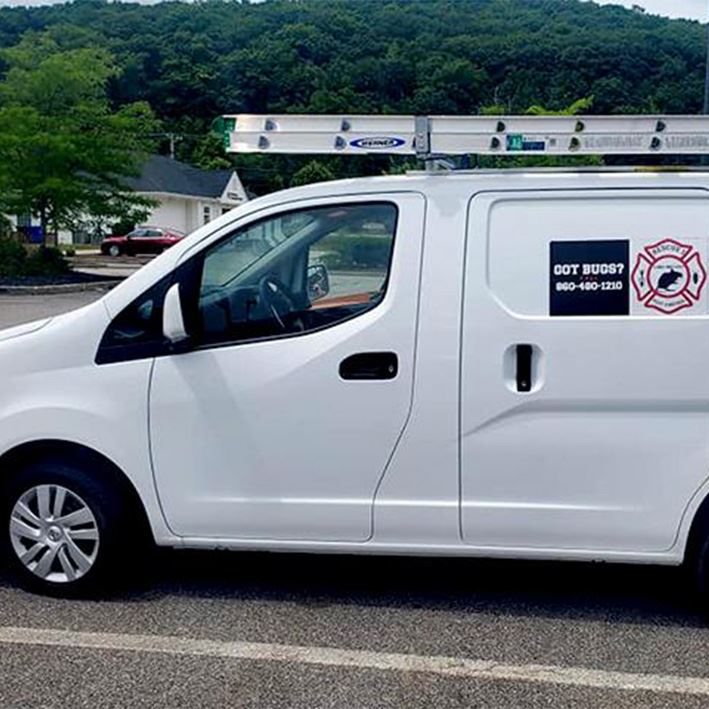
Centipedes & Millipedes
What are centipedes & millipedes?
.2403120923550.jpg)
Many legs, elongated bodies, and high moisture needs are just a few of the things that millipedes and centipedes have in common. Millipedes and centipedes live outside in damp soil and garden areas that surround most of our Connecticut homes. When the weather becomes too hot and dry, they will migrate into our structures, seeking moisture.
Though similar, centipedes and millipedes are different species, and there are some obvious ways to tell the two apart. Centipedes have a flattened elongated body and use their many legs to move quickly. Each of their body segments has one pair of legs attached to it. These pests also have mouthparts containing poison glands located on the first body segment behind their head. Centipedes also have long antennae that helps to identify them. As predators, centipedes feed on insects and other live prey.
Millipedes have elongated cylindrical bodies that are light brown to black. Each of their body segments has two legs attached. While millipedes have many legs, they are well-known for being slow movers, making avoiding these pests easy to do! Millipedes are scavengers and feed on decaying plants and animal matter.
Are centipedes & millipedes dangerous?
Millipedes and centipedes are nuisance pests. They are not dangerous because they aren’t known to spread diseases that make people ill. However, protecting your Connecticut home from these pests is still important because they move indoors in large numbers where they become annoying to contend with.
Centipedes have poison glands and can bite through human skin. Centipedes bites are painful, but their venom isn’t strong enough to cause health problems in most people. Millipedes can be problematic because they have glands producing fluids that can cause a skin rash on people that come into direct contact with them. When it comes to both millipedes and centipedes, it is best not to handle them, and if they find a way into your home, contact a professional to help eliminate them.
Why do I have a centipede & millipede problem?
Hot, dry weather is what causes people to have problems with centipedes and millipedes. Both live without much notice in the damp soil in gardens, under mulch or woodpiles, under trash cans or other containers, in wooded areas, and under rocks or landscape ties, all things found in or near many Connecticut homes. When living close to our home’s foundations, it is easy for them to find a way inside.
```

Why Choose Rescue 1 Pest and Termite Control?
-
30+ Years of Pest Control ExperienceWith over 3 decades of experience, our team has seen it all and you can rely on us for effective solutions.
-
Customized Treatment PlansOur treatment plans are tailored to fit the needs of your particular situation and work within your budget.
-
Family-Owned & OperatedExperience the difference of using a local, family-owned and operated business that's familiar with the pests in our area.
-
Same Day Appointments AvailableCount on us for dependable and prompt pest control solutions; offering same-day and emergency services.
Where will I find centipedes & millipedes?
Centipedes and millipedes move into homes and other structures seeking moist living conditions. They move through cracks and spaces they come across in the foundation, damaged door trim, and through gaps under exterior doors. Once inside, they quickly migrate to areas of a home that are dark and damp, often ending up around drains, spaces under sinks, and near leaky pipes.
Some areas of a house people often come across both millipedes and centipedes include:
- Utility rooms and crawlspaces
- Landry rooms
- Basements
- Bathrooms
- Kitchens
How do I get rid of centipedes & millipedes?
To get rid of millipedes and centipedes from your Connecticut home, partner with Rescue 1 Pest and Termite Control. Our professionals can accurately identify the intruders, perform the services needed to get rid of them and help you prevent future problems with centipedes, millipedes, and other pests. We specifically develop our Connecticut pest control services to meet our customer’s unique pests control needs. Contact us today to learn more about our residential or commercial pest control services!


See what people in your area are saying
At Rescue 1 Pest and Termite Control, your satisfaction is our priority! See for yourself what our customers have to say about working with us.
-
"I am so happy I can call them!"
Tyler came to my home and he was FANTASTIC! He took his time and explained everything he was going to do and the reasons behind it. He answered all of my questions and I felt much more relaxed with it all.
- Robin M. -
"The service was very thorough, the technician, Zachary, was extremely knowledgeable. Would highly recommend."- Steven G.
-
"What a fantastic experience with Jonathan!"
He came through checked for mice, set up boxes, and sealed the outside. He was very informative and had a ton of knowledge while walking me through each step. Thank you for your professionalism and responsiveness.
- Bot D. -
"I will be a continued customer for sure!"
Just had my first service and I am so thankful I went with Rescue 1. My technician was extremely knowledgeable and friendly. He made sure to answer all of my questions, explain every step of the process, and made sure I was okay with everything.
- Meghan M. -
"Highly recommended!"
I have been using their service for about 8 months. I couldn’t be happier. Thanks for being awesome and for keeping my home pest-free.
- Rebecca S. -
"So happy to not have to deal with those bees!"
Stephanos came over and removed a yellow jacket's nest that was under my deck/sunroom. Stephanos was able to locate the nest underground and remove most of it while destroying and treating what was left in the ground.
- Joe V. -
"No need to shop around!"
As a fellow business owner, I am picky about who I do business with. Chris and his team are top-notch, I refer them to all of my clients with no complaints. Best pest control company in CT by far.
- Matt B. -
"Amazing service!"
They were professional and so knowledgeable! On time and always responded so quickly. I would recommend this company hands down to anyone who may need an exterminating company!!
- Jess L.
How can I prevent centipedes & millipedes in the future?
Prevent problems with millipedes, centipedes, and other pests using the following prevention tips and the comprehensive pest control services at Rescue 1 Pest and Termite Control:
- Get rid of hiding spots by keeping woodpiles, trash cans, recycling bins, and compost containers up off of the ground and away from the outside walls of your home.
- Leave spaces between shrubs and bushes and between your home’s exterior. Doing so will help the sun to hit the ground and keep the soil dry.
- Repair leaky pipes and make sure gutters and downspouts work to direct water away from your house.
- Fix low-lying areas in your yard that allow water to collect.
- Regularly inspect the exterior walls and foundation of your home, repairing any defects you find.
- Place door sweeps on doors leading into your home.
- Use dehumidifiers to keep basements and other damp areas of your home free of moisture.
- Limit clutter in basements and other storage areas where millipedes and centipedes can hide.
Learn more about our residential and commercial pest control services in New Haven.


